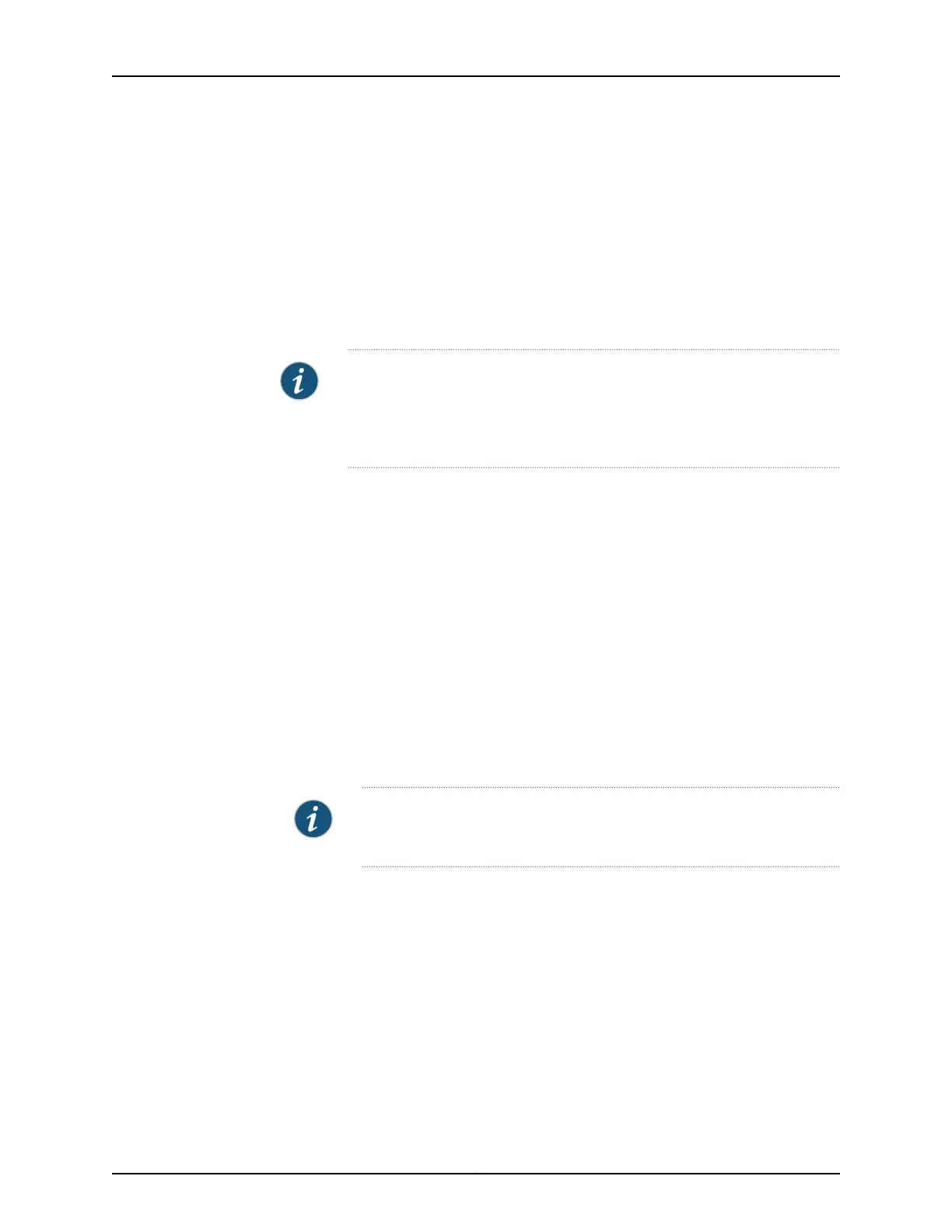You can configure E-LAN and E-LINE services by using bridge domains.
On ACX Series routers, you can configure bridge domains by using the following methods:
•
Bridge domain without a vlan-id number statement
•
Bridge domain with the vlan-id value set to none
•
Bridge domain with a single vlan-id
•
Bridge domain with a vlan-id-list
NOTE: The Layer 2 CLI configurations and show commands for ACX5048
and ACX5096 routers differ compared to other ACX Series routers. For more
information, see “Understanding Layer 2 Next Generation Mode on ACX5048
and ACX5096 Routers” on page 1167.
When you configure E-LAN and E-LINE services using a bridge domain without a vlan-id
number statement, the bridge domain should explicitly be normalized to a service VLAN
ID and TPID by configuring an input VLAN map under a logical interface. Explicit
normalization is required when a logical interface’s outer VLAN ID and TPID is not the
same as the service VLAN ID and TPID of the service being configured using a bridge
domain.
The following input VLAN map functions are supported in ACX Series routers:
•
push—Add a new VLAN tag to the top of the VLAN stack.
•
swap—Replace the outer VLAN tag of the VLAN stack in a frame.
•
pop—Remove a VLAN tag from the top of the VLAN tag stack.
•
swap-swap—Replace both the outer and inner VLAN tags of the frame.
•
push-push—Push two VLAN tags on top of the VLAN stack.
NOTE: push-push does not work on ACX Series routers if the incoming
packet already has a VLAN tag.
The following VLAN map functions are not supported in ACX Series routers:
•
swap-push—Replace the outer VLAN tag of the frame and add a new VLAN tag to the
top of the VLAN stack.
•
pop-swap—Remove the outer VLAN tag of the frame and replace the inner VLAN tag
of the frame.
•
pop-pop—Remove both the outer and inner VLAN tags of the frame.
Copyright © 2017, Juniper Networks, Inc.756
ACX Series Universal Access Router Configuration Guide

